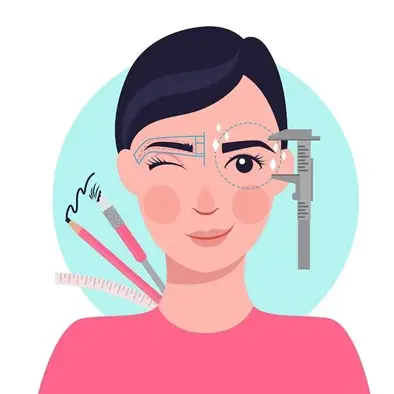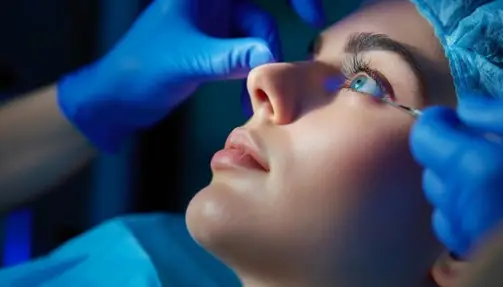Blepharoplasty Insights: How Eyelid Surgery Can Rejuvenate Your Look and Boost Confidence
Aging is inevitable, and one of the most noticeable signs often appears around the eyes. Sagging eyelids, puffiness, and wrinkles can make you look tired, older, or even sad. These changes not only affect your appearance but also your self-confidence. For many people, blepharoplasty, or eyelid surgery, offers a way to rejuvenate their look and restore that youthful vitality. This surgical procedure is designed to improve the appearance of the upper eyelids, lower eyelids, or both, making you look more rested and alert.
What Is Blepharoplasty?
Blepharoplasty is a cosmetic surgery that targets the eyelids. It involves removing excess skin, muscle, and sometimes fat from the upper and lower eyelids. The goal is to eliminate sagging skin, reduce puffiness, and create a smoother, more youthful appearance around the eyes.
Blepharoplasty can be performed on the upper eyelids, lower eyelids, or both, depending on the patient’s needs. It is often sought by individuals who are dissatisfied with the way their eyes look due to aging, genetics, or other factors.

Why Do People Choose Blepharoplasty?
The eyes are often considered the focal point of the face. They convey emotion, energy, and vitality. Unfortunately, the delicate skin around the eyes is also one of the first areas to show signs of aging. Common concerns that lead people to consider blepharoplasty include:
- Droopy upper eyelids: As we age, the skin loses its elasticity, causing the upper eyelids to droop. In some cases, this can even impair vision.
- Puffy bags under the eyes: Fat deposits can accumulate under the eyes, creating a puffy or tired appearance.
- Fine lines and wrinkles: The skin around the eyes is thin and prone to developing fine lines and wrinkles.
- Excess skin: Loose, sagging skin on the eyelids can create a tired or aged look.
People often seek blepharoplasty to address these concerns and achieve a more youthful, refreshed appearance. For some, the procedure is purely cosmetic, while for others, it may be medically necessary to improve vision by removing sagging skin from the upper eyelids.
Benefits of Blepharoplasty
Blepharoplasty offers a range of benefits, both cosmetic and functional. These benefits can have a profound impact on a person’s appearance and self-esteem.
- A More Youthful Appearance
One of the primary reasons people opt for blepharoplasty is to achieve a more youthful look. By removing excess skin and fat from the eyelids, the procedure can help smooth out wrinkles, reduce puffiness, and eliminate sagging. This can make a person look more rested, alert, and youthful.
- Enhanced Self-Confidence
Many people who undergo blepharoplasty report a significant boost in self-confidence. When you look in the mirror and see a more vibrant, refreshed version of yourself, it can positively affect how you feel about yourself. This increased confidence can extend into all areas of life, from personal relationships to professional endeavors.
- Improved Vision
In some cases, drooping upper eyelids can interfere with vision. This is particularly common in older individuals whose skin has lost elasticity. Blepharoplasty can correct this issue by removing the excess skin that is obstructing vision, resulting in not only an improved appearance but also enhanced vision.
- Natural Results
When performed by an experienced and skilled surgeon, blepharoplasty can produce very natural-looking results. The goal of the procedure is not to make you look like a different person but to enhance your natural beauty by rejuvenating the area around your eyes.

The Blepharoplasty Procedure
Blepharoplasty is a relatively straightforward surgical procedure, but like any surgery, it requires careful planning and consideration. Here’s what to expect before, during, and after the surgery.
- Consultation
The first step in the blepharoplasty process is a consultation with a board-certified plastic surgeon. During this consultation, the surgeon will evaluate your eyes, discuss your goals, and determine if blepharoplasty is the right procedure for you. They will also review your medical history, including any underlying health conditions that may affect your candidacy for the procedure.
- Preparing for Surgery
Before your surgery, your surgeon will provide you with detailed instructions on how to prepare. This may include avoiding certain medications, quitting smoking, and arranging for someone to drive you home after the procedure.
In some cases, your surgeon may recommend additional procedures, such as a brow lift or facelift, to complement your blepharoplasty and achieve the best overall results.
- The Procedure Itself
Blepharoplasty is typically performed on an outpatient basis, meaning you can go home the same day. The procedure can be done under local anesthesia with sedation or general anesthesia, depending on the extent of the surgery and the patient’s preference.
During the procedure, the surgeon makes incisions along the natural creases of the eyelids to minimize visible scarring. Excess skin, fat, and muscle are then carefully removed or repositioned to achieve the desired results. The incisions are closed with sutures or skin adhesives, and the patient is usually able to go home a few hours after the surgery.
- Recovery
Recovery from blepharoplasty typically takes about one to two weeks. During the first few days, you may experience swelling, bruising, and some discomfort around the eyes. Your surgeon will provide you with specific aftercare instructions, which may include applying cold compresses, keeping your head elevated, and using prescribed eye drops or ointments.
It’s important to avoid strenuous activities, bending, and lifting for a few weeks after the procedure to allow your eyes to heal properly. Most people are able to return to work and normal activities within a week or two, although complete healing may take several months.
Risks and Considerations
Like any surgical procedure, blepharoplasty carries some risks. While complications are rare, it’s important to be aware of them before undergoing surgery. Potential risks include:
- Infection: As with any surgery, there is a risk of infection. Following your surgeon’s aftercare instructions can help minimize this risk.
- Scarring: Although the incisions are made in natural creases, there is always a risk of scarring. However, most scars fade over time and become barely noticeable.
- Dry eyes: Some patients may experience dry eyes after blepharoplasty, which can usually be managed with eye drops or ointments.
- Temporary vision changes: Blurred vision or double vision can occur after the surgery, but this is usually temporary and resolves within a few days.
- Asymmetry: In rare cases, there may be some asymmetry between the eyes after surgery. Your surgeon will take great care to achieve balanced results, but perfection is not always possible.
It’s essential to choose a highly qualified, board-certified plastic surgeon to perform your blepharoplasty to minimize these risks and achieve the best possible outcome.

Who Is a Good Candidate for Blepharoplasty?
Blepharoplasty is a highly personalized procedure, and the best candidates are those who are in good overall health and have realistic expectations about the outcome. You may be a good candidate for blepharoplasty if:
- You have excess skin that impairs your vision or creates a tired appearance.
- You have puffiness or bags under your eyes that you would like to reduce.
- You are in good physical health and do not have any underlying conditions that would impair healing.
- You are a non-smoker or are willing to quit smoking before and after the procedure.
- You have a positive outlook and realistic goals for your appearance.
It’s important to have an open and honest conversation with your surgeon about your goals and expectations. Your surgeon can help you determine if blepharoplasty is the right procedure for you and what kind of results you can expect.
Conclusion
Blepharoplasty is a transformative procedure that can rejuvenate your appearance and boost your confidence. By addressing common concerns like droopy eyelids, puffiness, and fine lines, eyelid surgery can help you achieve a more youthful, refreshed look that reflects your inner vitality. Whether you’re seeking cosmetic improvement or relief from vision impairment, blepharoplasty offers a safe and effective solution for restoring your eyes’ natural beauty.
As with any surgery, it’s important to choose a board-certified plastic surgeon with experience in blepharoplasty to ensure the best possible results. If you’re considering eyelid surgery, schedule a consultation to explore your options and take the first step toward a brighter, more confident you.
